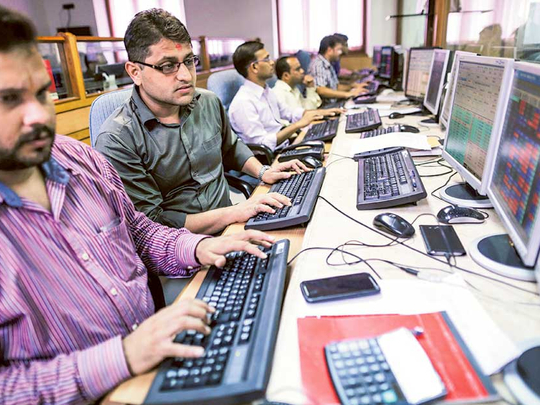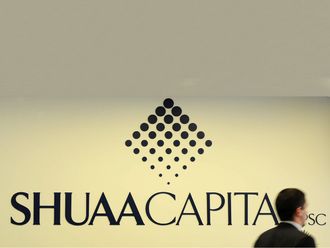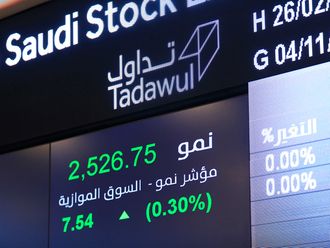
A bigger-than-expected interest rate cut by India’s central bank has bolstered the outlook for stocks in one of the world’s top emerging markets. The half percentage point reduction in borrowing costs just before the festival season when demand usually perks up, should provide a shot in the arm to companies.
Factors that drove the Reserve Bank of India to slash the repo rate to 6.75 per cent, the lowest in 4-1/2 years, included muted global commodity prices outlook caused by China’s slowdown, sputtering domestic growth and little threat from food inflation despite deficient monsoon rains that have dented farm output.
Immense pressure by the political leadership in New Delhi also tipped the scales for the big rate reduction. “Clearly this was about, given the state of the economy, how can we move forward,” RBI Governor Raghuram Rajan told a news conference, underlining the central bank accepted the need to revive investment amid concern that growth was losing momentum.
But Rajan, a former chief economist at the International Monetary Fund, was not amused when asked if he felt like Santa Claus. “My name is Raghuram Rajan, and I do what I do,” he shot back, indicating he was his own boss.
The central bank lowered its growth forecast for India to 7.4 per cent in the current financial year to March 2016, from 7.6 per cent previously and well below New Delhi’s target of 8-8.5 per cent.
Although Rajan later told a TV channel that there was scope for more monetary easing, most economists believe this would come only in 2016.
“We think the RBI’s action is essentially to get ahead of market expectations, and use the window available before the Fed starts hiking rates,” Tushar Poddar, India economist at Goldman Sachs, said in a report.
“While the language is dovish, given the aggressive front-loading, and the optimistic inflation projections, there would need to be very significant downside surprises on headline inflation from its projections for the RBI to cut rates again, in our view.”
Stocks rally
Domestic investors swarmed the market after the rate cut, scooping up beaten-down shares such as Tata Steel, Larsen & Toubro, Bharat Heavy Electricals and Hindalco among others. However, foreign funds continued to be sellers as they battled redemption pressures, even though money managers were upbeat about the prospects for returns in the months ahead.
The top-30 Sensex climbed 1.4 per cent in the week to 26,220.95.
“India remains our number one pick in global emerging-market equities currently,” Jonathan Garner, the Hong Kong-based chief Asia and emerging-market strategist at Morgan Stanley Asia Ltd told Bloomberg after the rate cut. “We expect further outperformance on this news.”
Although Indian companies have been reluctant to invest in new capacities because of skittish demand, foreign direct investment has been robust thanks to the business-friendly government in New Delhi.
India was the top destination for foreign direct investment in the first half of 2015, pipping China by a margin of about $3 billion (Dh11 billion) and beating the US by $4 billion, according to London-based Financial Times data.
“With midyear data on greenfield FDI now in, 2015 looks to be a milestone year for India following its impressive performance in 2014,” the Financial Times said.
India has also climbed 16 notches in the World Economic Forum’s global competitiveness ranking to 55.
“As a factor-driven economy, India seems to be on the right path, as the study shows it has improved in 10 out of the 12 broad pillars of competitiveness. This progress is noteworthy, especially since it comes after five years of declining rankings,” Anindya Bhowmik at PhillipCapital said in a report.
“The most important takeaway of this data as well as ease of business study is the emphasis of the current government on objective measurement of output and the willingness to compete against global peers under the same framework.”
Earnings awaited
A business survey showed that manufacturing activity in September slowed more than expected to a seven-month low because of softening demand and output, which would hurt quarterly earnings due in the coming weeks.
The Nikkei Manufacturing Purchasing Managers’ Index, compiled by Markit, fell to 51.2 in September from 52.3 in August and against predictions of 52.0.
“Despite having been supported by sustained increases in new work, growth of Indian manufacturing production in September was weighed down by a difficult economic climate,” said Pollyanna De Lima, economist at Markit.
However, the input prices subindex dropped to its lowest since February 2009, owing to falling commodity prices, and manufacturers in turn passed on the lower cost to customers.
“Input costs decreased for the second month running in September, a situation not seen since the financial crisis. This provided firms with more room for price negotiation and selling prices were lowered on average, improving manufacturers’ competitiveness,” De Lima said.
Software bellwether Infosys Ltd will kick off the quarterly earnings parade, among major companies, on October 12.
Sandeep Muthangi and Nandish Dalal, analysts at IIFL Institutional Research, said that although software companies were likely witnessing better demand environment due to digital-related services and an improvement key US markets, stability in pricing was essential for growth to accelerate.
“In second quarter of 2015-16, we expect revenue growth and margins to be polarised among IT vendors. We expect Infosys to witness the best revenue growth due to strong momentum,” they wrote in a report.
Analysts at Religare expect Infosys, which has nearly 176,000 employees on its rolls, to maintain its full-year revenue growth guidance of 10-12 per cent in constant currency terms.
The writer is a journalist based in India.












